- 4 Technology
- Technology Development
BIMWill, a Building Management System to Optimally Manage Buildings
Our BIMWill® platform, which can integrate all kinds of building information, was applied to tenant office buildings in Tokyo for the first time in Japan.
Through the creation of a digital twin, we can provide a variety of services, including building management.
Obayashi Corporation has developed BIMWill, a platform that utilizes a construction BIM model to integrate all kinds of building-related information, including operation and maintenance history. The company recently applied the platform for the first time to “oak kanda kaji-chou” (completed in August 2017 in Chiyoda, Tokyo), a tenant office building of Obayashi-Shinseiwa Real Estate Corporation (Head Office: Chiyoda, Tokyo)—a member of the Obayashi Group.
Our goal is to increase both the efficiency and sophistication of the building management business by integrating operation and maintenance information pertaining to various pieces of equipment, along with map-related, weather-related, and other external information, into the BIM model upon building completion. In addition, since information that includes the position and experiential information of building users (such as how hot or cold they feel) is integrated into the platform, BIMWill functions as a digital twin of the actual building, and its utilization enables us to provide various services.
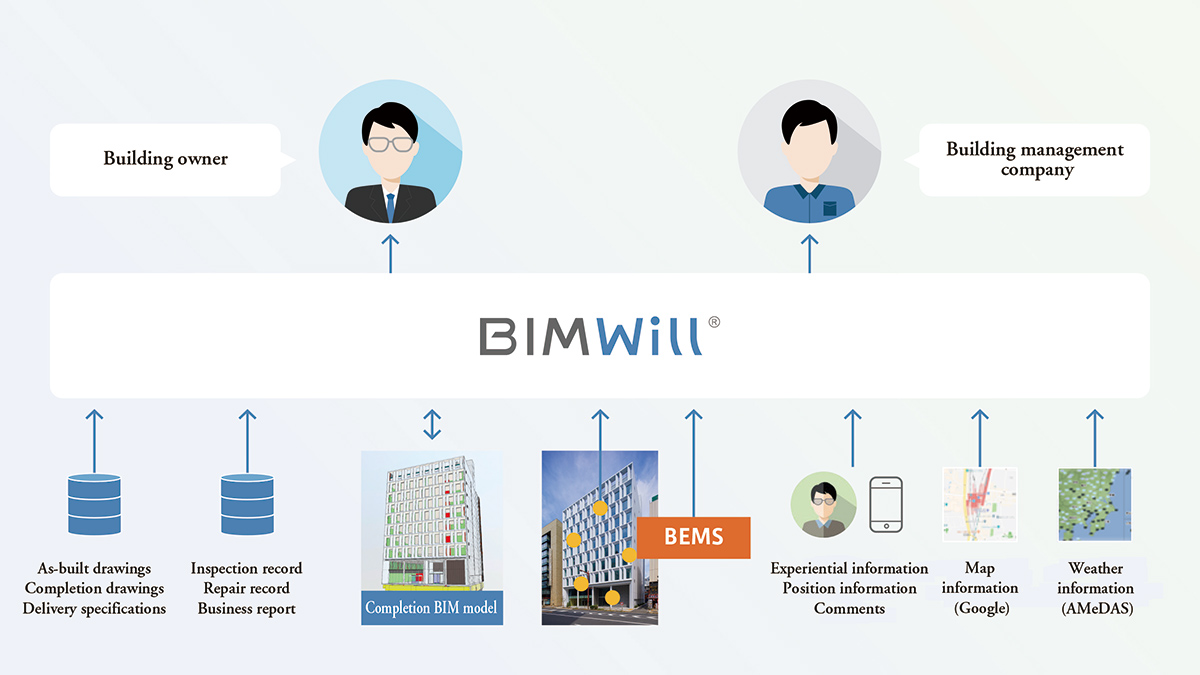
Obayashi Corporation calls its new construction process based on BIM, “Smart BIM®.” By systematically sharing and utilizing a building database for everything from the design stage to operation and maintenance, while developing and providing various elemental technologies aimed at improving productivity and providing new services, BIMWill has become a core system for achieving Smart BIM after building completion.
In order to utilize the building information individually possessed and accumulated by each Obayashi Group company, as well as the business know-how and knowledge cultivated by each of them, the development has been jointly handled through the participation of Obayashi-Shinseiwa Real Estate Corporation, Obayashi Facilities Corporation (Head Office: Chiyoda, Tokyo), Oak Information System Corporation (Head Office: Sumida, Tokyo), Oak Setsubi Corporation (Head Office: Chuo, Tokyo), and Kumamoto University (https://ewww.kumamoto-u.ac.jp/en/, Associate Professor of the Faculty of Advanced Science and Technology: Yasunobu Onishi).
For oak kanda kaji-chou, the BIM model utilized at the design and construction stages is being used as a base to cross-link information on BIMWill, including information provided by operating equipment, information necessary for maintenance, and information generated during daily management business. BIMWill will display the information as a way of increasing the efficiency and sophistication of the building management business. Implementing a BIM model as an interface for entering or displaying various types of information enables users to intuitively understand the spatial positional relationships between each type of information, which also offers the advantage in that it is possible to notice things that were previously overlooked.
The main features of BIMWill are described below.
-
A more efficient, sophisticated building management business through the utilization of a BIM model and the cloud
Since BIMWill is built on the cloud, it can be accessed online using a web browser. Normally, a large number of facilities are installed in a building. Accordingly, since operation information, repair histories, and other information concerning these facilities were previously managed by several systems, building managers had to collect that information from each individual system, then write down summaries of the information necessary to understand, analyze, and manage a situation.
With BIMWill, all information necessary for building management is gathered on a single web screen, which greatly increases efficiency in comparison to before, namely, the complex task of acquiring and checking information using different systems.
In addition, since the system uses the cloud, a building’s situation can also be monitored remotely over the Internet. The remote, centralized management of multiple buildings is also possible. -
Flexible linking with external systems
BIMWill can be linked to various external systems through an API. At oak kanda kaji-chou, we linked WellnessBOX® (developed by Obayashi Corporation), which improves the comfort of office space through the IoT, BILCON-Σ® Cloud Edition (developed by Obayashi Corporation), which is used to grasp the operation status of various facilities, Remote Alarm Monitoring System (developed by https://www.nec.com/), which is used to remotely acquire equipment failure alarms, and F@cile®_Site (developed by Oak Information System Co.), which is used to store and share documents related to building maintenance.
By integrating the information acquired or possessed by each system into BIMWill, building managers can utilize any necessary information in an integrated manner without needing to be aware of any individual systems.
For example, if an equipment failure occurs, the related information from each system, such as location information identified using a BIM model, corresponding equipment repair history information, and links to instruction manuals, is added to the failure alarm information and displayed in an integrated manner on the BIMWill screen.
Please see the video overview of our building management system WellnessBOX that utilizes IoT and AI, as well as our information platform BIMWill.IoT and AI utilizing building management system WellnessBOX and information platform BIMWill (2:37, Japanese narration and subtitles)(Video play time: 2:36) -
Expanded service possibilities through the realization of a digital twin
When information acquired from sensors installed in actual office space is applied to the BIM model on the cloud via the IoT, the building in real space is synchronized with the BIM model in virtual space on BIMWill. In addition, by integrating the operation information of various building-related systems and other information, BIMWill can achieve a digital twin that reproduces the current situation of the actual building in virtual space.
Obayashi Corporation's basic concept is to provide new services that utilize the various types of information integrated into a digital twin. For example, in the case of a commercial facility, by combining and visualizing room temperature, humidity, brightness, and other environmental information, as well as visitor position information and purchase records, a new sales promotion method of adjusting in-store brightness, temperature, and humidity to increase store visitors’ appetite for spending can be proposed. In this way, we believe that BIMWill can provide new value that could not be realized in the past.
In addition, since BIMWill not only enables an understanding of a building’s current situation but also accumulates past information in an easy-to-use format, it will likely be possible to one day use the platform to predict a building’s future, including preventive maintenance of equipment, etc., in addition to the ability to apply knowledge on how the indoor environment can increase spending appetite to the design and construction of commercial facilities.
Overview of BIMWill usage by users
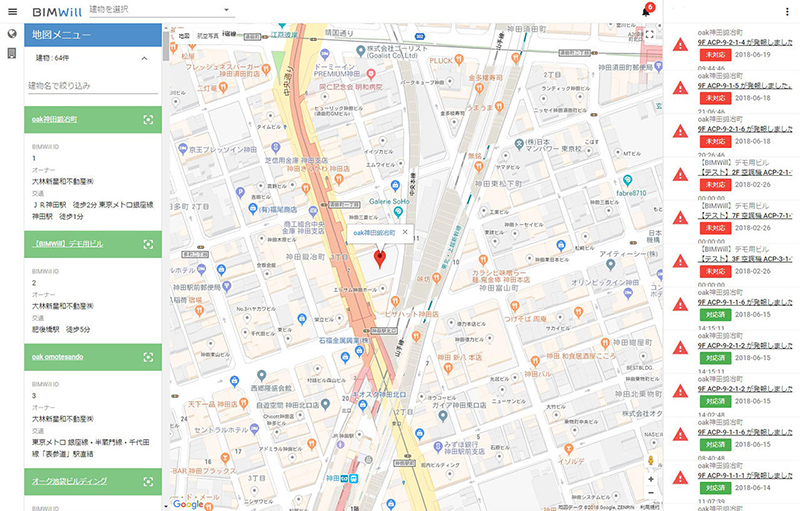
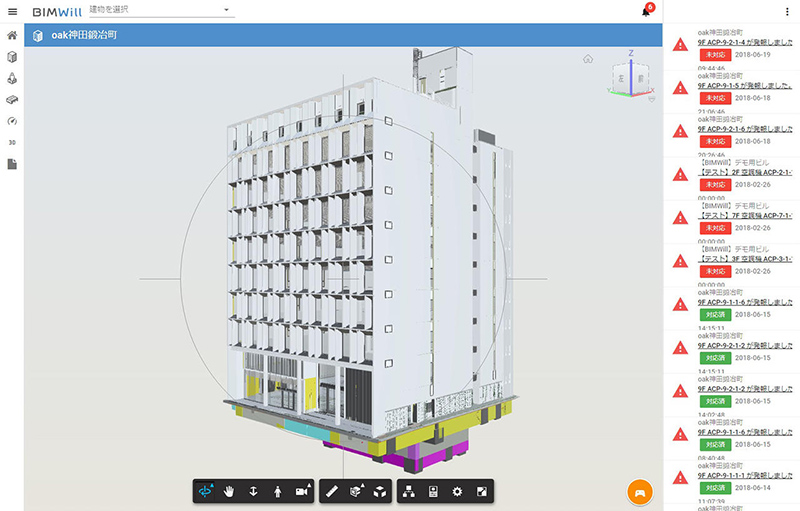
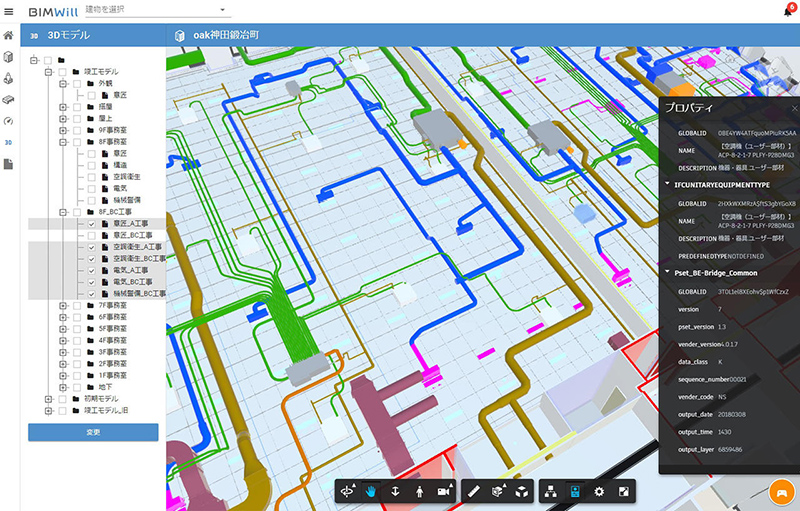
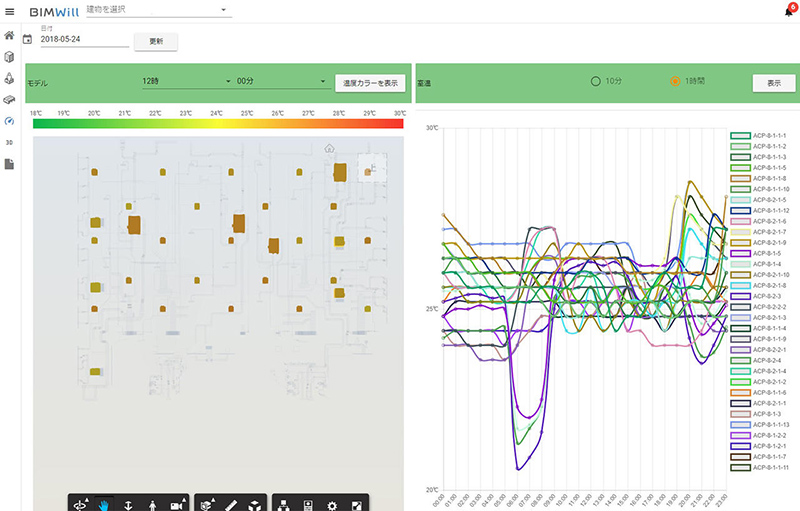
An interface for linking applications by partially revealing one type of software so that its functions can be shared with other software.
With BIMWill, an API provided by WellnessBOX is used to acquire detailed equipment operation information.
- Management and
Organization- The Articles of Incorporation
- Basic Principles
- Transitioning of Corporate Symbol
- Corporate Officers
- Organization Chart
- Stock Information
- Financial Statements
- Technology
- BIM Timeline
- Awards
- Major Publication
- Group Companies
- Group Companies (in Japan)
- Group Companies (Overseas)